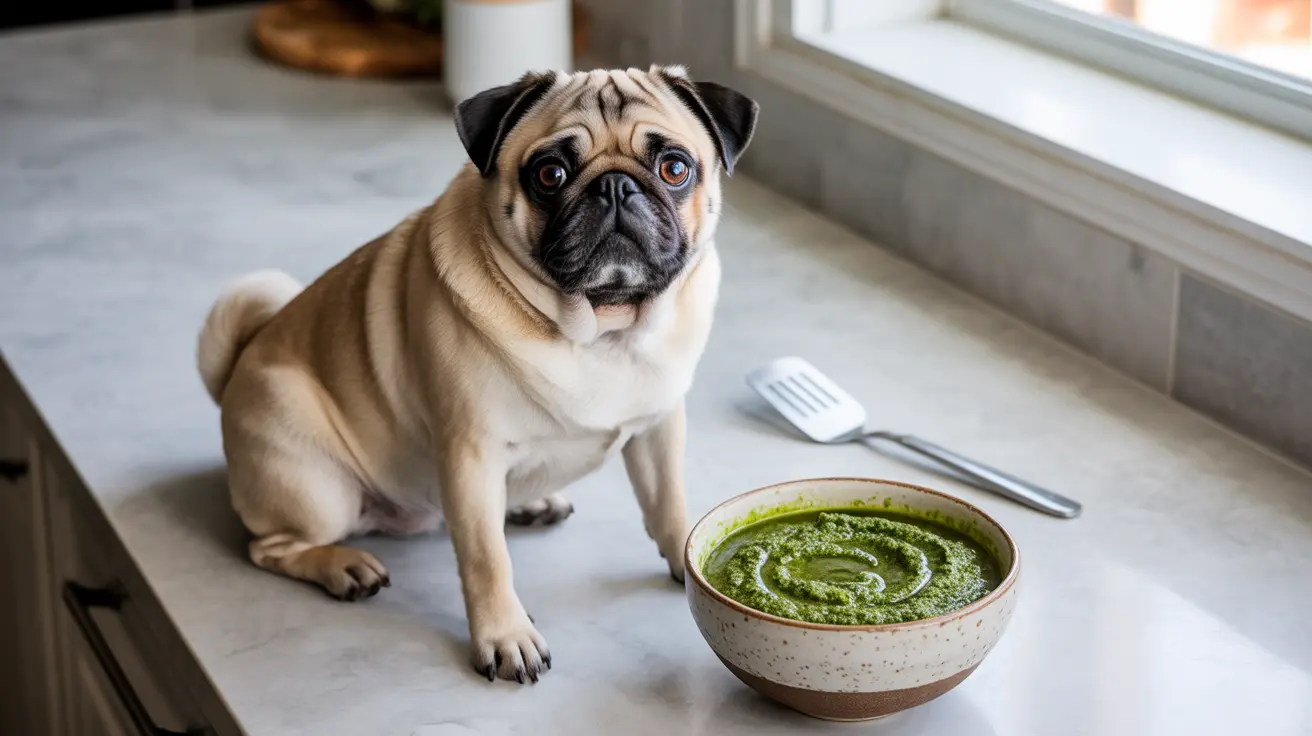Understanding the Dangers of Pesto for Dogs
Traditional pesto contains several ingredients that can harm dogs, with garlic being the most dangerous component. Garlic contains thiosulfate, which can cause severe anemia in dogs by damaging their red blood cells. Even small amounts of garlic can accumulate over time and cause serious health problems.
Beyond garlic, other pesto ingredients also present risks:
- Pine nuts: High in fat and phosphorus, potentially causing pancreatitis
- Olive oil: Can trigger digestive issues and contribute to unhealthy weight gain
- Parmesan cheese: Contains excessive sodium that's problematic for dogs
- Basil: While not toxic, large amounts can cause stomach upset
Health Risks and Warning Signs
When dogs consume pesto, they may experience various symptoms depending on the ingredients and amount consumed. Watch for:
- Vomiting and diarrhea
- Lethargy and weakness
- Pale gums or jaundice (from garlic toxicity)
- Increased thirst and urination
- Abdominal pain or distention
What to Do If Your Dog Eats Pesto
If your dog manages to consume pesto, take these immediate steps:
- Document how much they ate and when
- Monitor for concerning symptoms
- Contact your veterinarian immediately
- Save the pesto container or recipe list for ingredient verification
- Follow your vet's guidance regarding treatment
Safe Alternatives for Dogs
If you want to share similar flavors with your dog, consider these safer alternatives:
- Dog-safe herb combinations (basil, parsley, mint)
- Plain, cooked vegetables
- Small amounts of plain, low-fat yogurt
- Dog-specific sauce recipes approved by veterinarians
Frequently Asked Questions
Can dogs safely eat pesto if it doesn't contain garlic?
Even pesto without garlic isn't safe for dogs. The high fat content from oils and nuts, combined with the salt from cheese, can cause digestive issues and potentially lead to pancreatitis.
What are the symptoms of garlic poisoning in dogs after eating pesto?
Symptoms include vomiting, diarrhea, weakness, pale gums, rapid breathing, and in severe cases, jaundice. These signs may not appear immediately but can develop within a few days of consumption.
How should I respond if my dog accidentally eats traditional pesto?
Contact your veterinarian immediately, note the amount consumed and time of ingestion, and watch for symptoms. Don't induce vomiting unless specifically instructed by your vet.
Are there any homemade pesto recipes that are safe for dogs to eat?
While you can make dog-friendly herb mixtures using safe ingredients like basil, parsley, and a small amount of olive oil, these should be given sparingly and only after consulting with your veterinarian.
Why is garlic toxic to dogs while it's safe for humans to consume?
Dogs lack the necessary enzymes to properly process thiosulfate, a compound found in garlic. This makes them particularly susceptible to red blood cell damage and anemia, while humans can safely metabolize these compounds.
Conclusion
While pesto might be a delicious addition to human meals, it's best to keep it away from your canine companions. The risks associated with its ingredients, particularly garlic, far outweigh any potential benefits. Instead, focus on providing your dog with veterinarian-approved treats and foods specifically formulated for their dietary needs.






